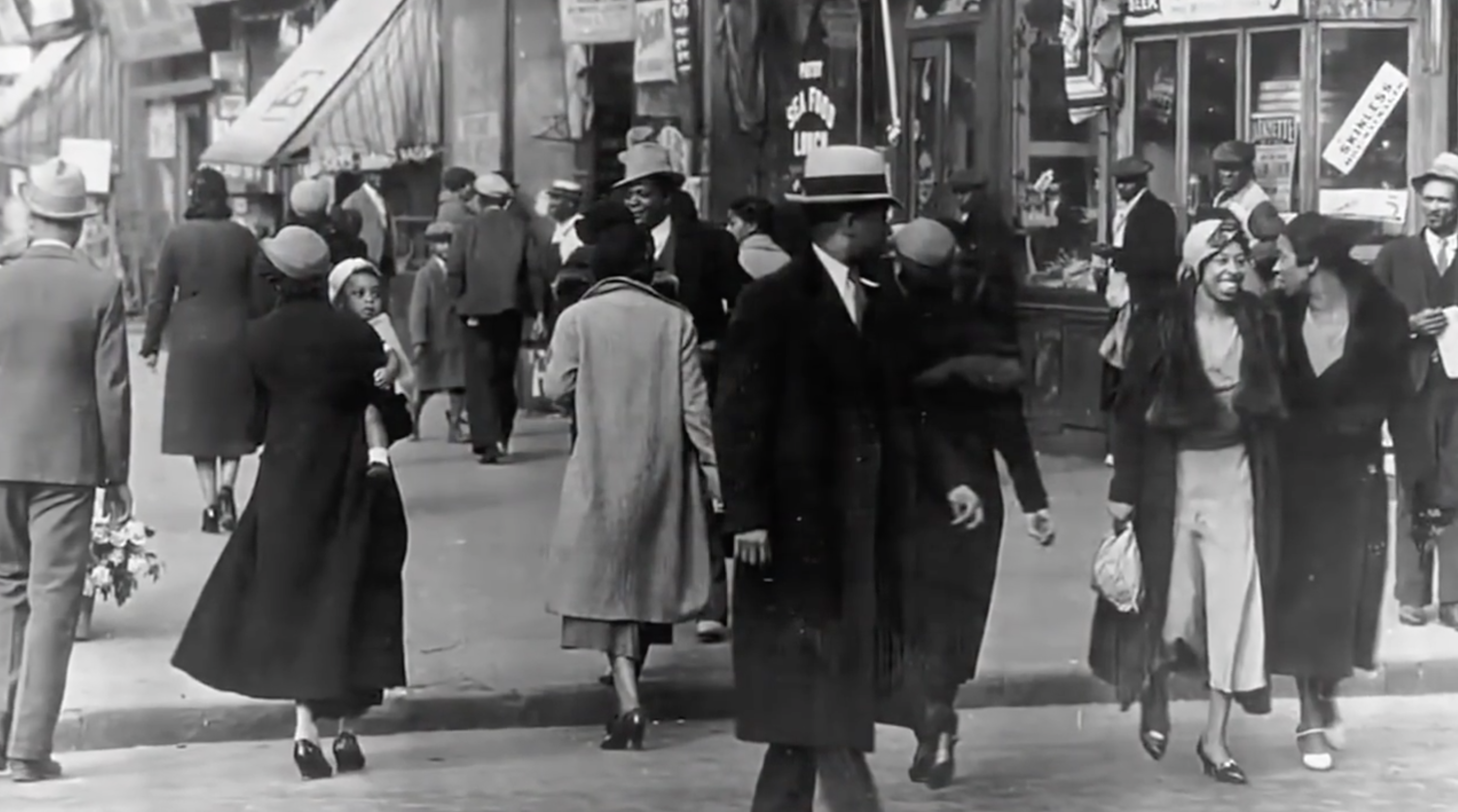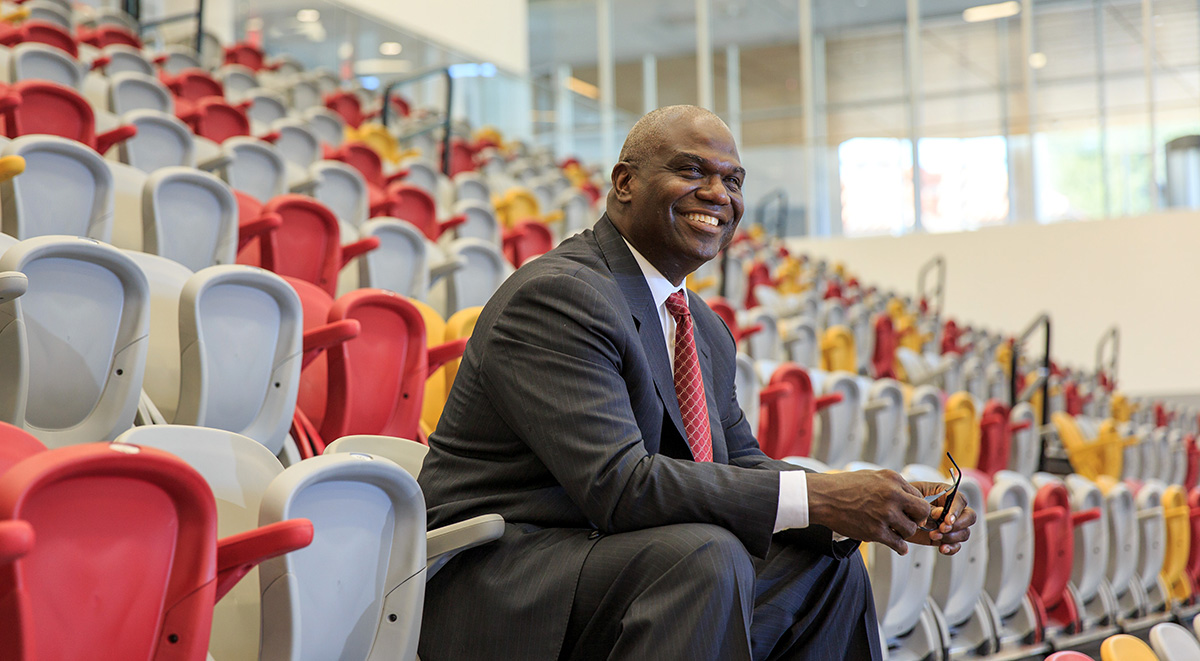
The Oklahoma Eagle Newswire
Washington Rucker: “Once the dollar came in, it was no reason to leave”
John W. Franklin Historian of the Smithsonian National Museum of African American History and Culture explained to Smithsonian Magazine that Black and Native people built wealth after discovering oil near the city in the early 1900s. That wealth anchored Greenwood’s thriving Black business district, which placed it among the country’s most affluent Black neighborhoods. “That’s what leads to Greenwood being called the Black Wall Street,” said Franklin. “It had restaurants and furriers and jewelry stores and hotels.”
That wealth infuriated White residents and business owners, and their anger exploded on May 31, 1921. According to the Tulsa Historical Society & Museum, police arrested a Black man named Dick Rowland on suspicion that he assaulted Sarah Page, a White woman, in an elevator the previous day. Local newspapers circulated unsubstantiated reports about Rowland allegedly raping Page, and an armed White group confronted a similarly armed Black group of World War I veterans outside the courthouse where the sherriff held Rowland. The two sides exchanged shots until the outnumbered Black militia, initially trying to prevent a lynching, had to retreat.
White Tulsans then attacked the Greenwood neighborhood for two days. Smithsonian Magazine says the mobs destroyed 35 blocks and killed almost 300 Black people. Police and the National Guard intervened primarily to put out building fires and arrest Black people, some of whom were taken out of vigilante custody. Franklin says that White rioters, aided by city government and the National Guard,” were deputized and handed weapons” to carry out the massacre.
But while anger towards Rowland may have lit the fuse, Franklin says the riots systematically targeted Black wealth. Franklin helped bring a manuscript from his grandfather, Tulsa lawyer Buck Colbert Franklin, to the museum last year. The manuscript includes the elder Franklin’s description of private planes, commissioned either by the city or White business owners, that were used to bomb Greenwood:
Many Black Americans moved to Oklahoma in the years before and after 1907, which is the year Oklahoma became a state. Oklahoma represented change and provided a chance for black Americans to get away from slavery and the harsh racism of their previous homes. Most of them traveled from other states, and Oklahoma offered hope and provided all people with a chance to start over. They traveled to Oklahoma by wagons, horses, trains, and even on foot.
Many of the black Americans who traveled to Oklahoma had ancestors who could be traced back to Oklahoma. Many of the settlers were relatives of Native Americans who had traveled on foot with the Five Civilized Tribes along the Trail of Tears. Others were the descendants of people who had fled to Native American Territory. Many Black residents were also from the various Muskogee speaking peoples, such as Creeks, Seminoles, and the Yuchi, while some had been adopted by the tribe after the Emancipation Proclamation. They were thus able to live freely in the Oklahoma Territory.
“It was all about Wealth (Money)”

When Tulsa became a booming and rather well noted town in the United States, many people considered Tulsa to be two separate cities rather than one city of united communities. The white residents of Tulsa referred to the area north of the Frisco railroad tracks as “Little Africa”. This community later acquired the name Greenwood and by 1921 it was home to about 10,000 black residents.
Greenwood was centered on a street known as Greenwood Avenue. This street was important because it ran north for over a mile from the Frisco Railroad yards, and it was one of the few streets that did not cross through both black and white neighborhoods. The citizens of Greenwood took pride in this fact because it was something they had all to themselves and did not have to share with the white community of Tulsa. Greenwood Avenue was home to the black American commercial district with many red brick buildings. These buildings belonged to black Americans and they were thriving businesses, including grocery stores, banks, libraries, and much more. Greenwood was one of the most affluent communities and it became known as “Black Wall Street.”
Black Wall Street

During the oil boom of the 1910s, the area of northeast Oklahoma around Tulsa flourished, including the Greenwood neighborhood, which came to be known as “the Negro Wall Street” (now commonly referred to as “the Black Wall Street”). The area was home to several prominent black businessmen. Greenwood boasted a variety of thriving businesses that were very successful up until the Tulsa Race Riot. Not only did black Americans want to contribute to the success of their own shops, but there were also racial segregation laws that prevented them from shopping anywhere other than Greenwood.
Detroit Avenue, along the edge of Standpipe Hill, contained a number of expensive houses belonging to doctors, lawyers and business owners. The buildings on Greenwood Avenue housed the offices of almost all of Tulsa’s black lawyers, realtors, doctors, and other professionals. In Tulsa at the time of the riot, there were fifteen well-known black American physicians, one of whom, Dr. A.C. Jackson, was considered the “most able Negro surgeon in America” by one of the Mayo brothers. Dr. Jackson was shot to death as he left his house during the unrest. Greenwood published two newspapers, the Tulsa Star and the Oklahoma Sun, which covered not only Tulsa, but also state and national news and elections. The buildings that housed the newspapers were destroyed during the destruction of Greenwood.
Greenwood was a very religiously active community. At the time of the racial violence there were more than a dozen black American churches and many Christian youth organizations and religious societies.
In northeastern Oklahoma, as elsewhere in America, the prosperity of minorities emerged amidst racial and political tension. The Ku Klux Klan made its first major appearance in Oklahoma shortly before one of the worst race riots in history. It is estimated that there were about 3,200 members of the Klan in Tulsa in 1921
O.W. Gurley

Around the start of the 20th century O.W. Gurley, a wealthy black land-owner from Arkansas, traversed the United States to participate in the Oklahoma Land run of 1889. The young entrepreneur had just resigned from a presidential appointment under president Grover Cleveland in order to strike out on his own.
In 1906, Gurley moved to Tulsa, Oklahoma where he purchased 40 acres of land which was “only to be sold to colored”. Black ownership was unheard of at that time.
Among Gurley’s first businesses was a rooming house which was located on a dusty trail near the railroad tracks. This road was given the name Greenwood Avenue, named for a city in Mississippi. The area became very popular among black migrants fleeing the oppression in Mississippi. They would find refuge in Gurley’s building, as the racial persecution from the south was non-existent on Greenwood Avenue.
In addition to his rooming house, Gurley built three two-story buildings and five residences and bought an 80-acre (32 ha) farm in Rogers County. Gurley also founded what is today Vernon AME Church.
This implementation of “colored” segregation set the Greenwood boundaries of separateness that exist to this day: Pine Street to the North, Archer Street and the Frisco tracks to the South, Cincinnati Street on the West, and Lansing Street on the East. The segregation is pronounced in subtle landmarks. South of Archer, Greenwood Avenue does not exist in white neighborhoods.
Another black American entrepreneur, J.B. Stradford, arrived in Tulsa in 1899. He believed that black people had a better chance of economic progress if they pooled their resources, worked together and supported each other’s businesses. He bought large tracts of real estate in the northeastern part of Tulsa, which he had subdivided and sold exclusively to other blacks. Gurley and a number of other blacks soon followed suit. Stradford later built the Stradford Hotel on Greenwood, where blacks could enjoy the amenities of the downtown hotels who served only whites. It was said to be the largest black-owned hotel in the United States.
Gurley’s prominence and wealth were short lived. In a matter of moments, he lost everything. During the race riot, The Gurley Hotel at 112 N. Greenwood, the street’s first commercial enterprise, valued at $55,000, was lost, and with-it Brunswick Billiard Parlor and Dock Eastmand & Hughes Cafe. Gurley also owned a two-story building at 119 N. Greenwood. It housed Carter’s Barbershop, Hardy Rooms, a pool hall, and cigar store. All were reduced to ruins. By his account and court records, he lost nearly $200,000 in the 1921 race riot.
Because of his leadership role in creating this self-sustaining exclusive black “enclave“, it had been falsely rumored that Gurley was lynched by a white mob and buried in an unmarked grave. However, according to the memoirs of Greenwood pioneer, B.C. Franklin, Gurley exiled himself to California. The founder of the most successful black community of his time vanished from the history books and drifted into obscurity. He is now being honored in a 2008 documentary film called, Before They Die! The Road to Reparations for the 1921 Tulsa Race Riot Survivors.











